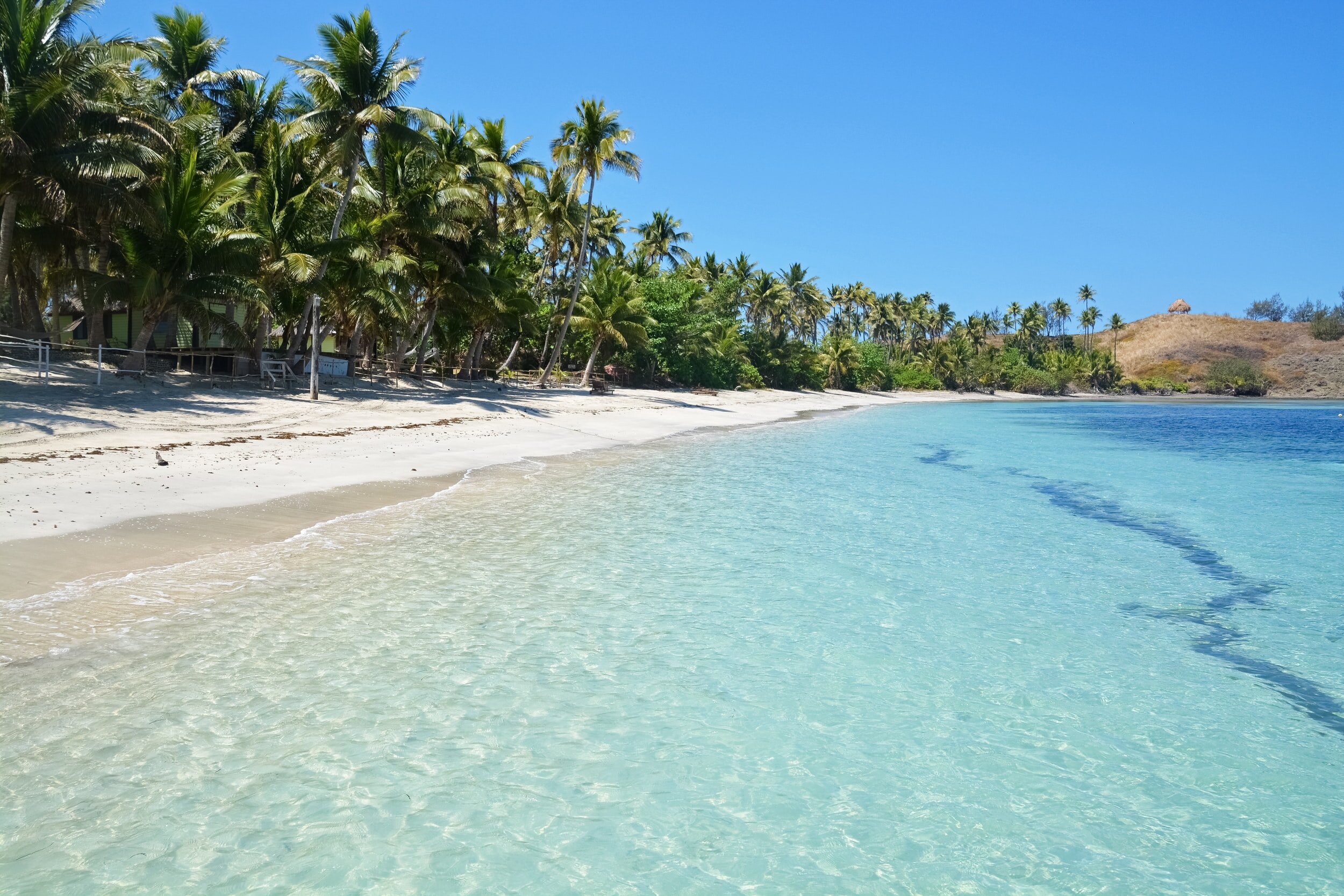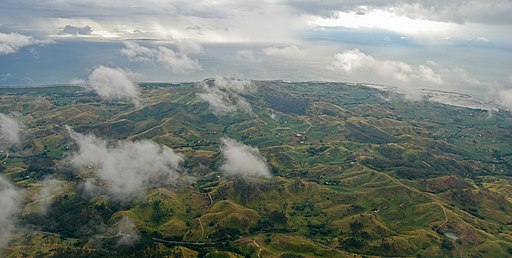
Fiji Coming Soon - Webpage Currently Being Edited
Core analysis conducted and presented by Laxmita Neelma Kumar, Timaima Samulo Mocenanuma, and Krishneil Narayan of Fiji in August, 2021.
Executive Summary
Fiji is a tropical country in the South Pacific Ocean, comprising 332 volcanic islands scattered across 1.3 million square kilometers of ocean. Viti Levu (10,429 km sq) and Vanua Levu (5,556 km sq) are the two largest islands and major inhabited regions, comprising 87% of the total land area. Fiji’s 2018 GDP is $8.53 billion USD, with a per-capita GDP of only $5,800. One quarter of Fijians are under 15, and another quarter are between 15-29, meaning that over half of the population are classified by the UN as “youth.” Nearly 56% of Fijians live in an urban area; this percentage is expected to increase further over time. Tourism is the largest sector in the Fijian economy, accounting for over 25% of GDP; agriculture is the second largest sector. In 2020, due to the Covid-19 crisis, the Fijian economy shrunk by 20%; currently 119,500 of Fiji’s 884,887 people are jobless.
NDC Highlights:
Fiji’s 2021 NDC submission is 20 pages long, without any supplemental material
This is a substantial improvement in detail from the original 2016 NDC, which was only 10 pages
No substantive changes from 2016 NDC Mitigation Targets
2021 NDC now includes significant Adaptation Targets
Developed NDC with stakeholder input from NGOs, industry experts, academic exerts, and technical consultants
Mentions gender considerations as part of planning process, but does not discuss specific methods for inclusion, or plans to ensure a balanced outcome
No specific effort made to include youth perspectives
Equity-focused Recommendations:
Creation of a specific framework for taking youth perspectives into account, either from a top-down (direct solicitation of ideas from young people) or bottom-up (youth-led projects such as a Youth Council) approach
Further consideration of gender in the NDC, including explicit effort to include women and LGBT people proportionally in high-level policy discussions, and specific analysis of gender impacts in mitigation and adaptation efforts to ensure a balanced outcome
Include consideration of indigenous needs and perspectives in NDC
Creation of a framework for independent NGO analysis of progress and outcomes over time in order to hold government accountable to stated goals
Quick Links
Fiji’s Intended Nationally Determined Contribution (Intended Fijian NDC - April 2016)
Fiji’s Updated Nationally Determined Contribution (Updated Fijian NDC - December 2020)
Outline
Introduction
Emission Analysis
Development Concerns
Gender and Equity Analysis
Indigenous Perspective
Civil Society Analysis
Conclusion
References
Introduction
Pacific island countries are on the frontlines of climate change due to their limited size and remote location. They often face particularly dangerous weather events - such as intense tropical cyclones, floods, and droughts – which are becoming more common due to increased climate variability. Rising temperatures will directly negatively impact the aquatic and terrestrial ecosystems of Pacific islands, threatening the livelihood of many Pacific peoples. Perhaps most dramatically, rising sea-levels will inundate coasts, erode shorelines, and impact shallow coastal groundwater in many low-lying areas; this process already threatens the very existence of a number of Pacific island nations, with experts predicting that some will be fully gone within just a few years.
Clearly, climate change poses a significant existential threat to Fiji’s national security, current and future development ambitions, economic and environmental stability, cultural practices, livelihoods, and overall human wellbeing. As a response to this particularly dire situation, the 2020 Fijian NDC is surprisingly weak in some areas, yet strong in others.
Compared to the 2016 NDC, the main Mitigation Targets of the 2020 NDC remain the same: Fiji is still targeting only a 30% emission reduction by 2030, compared to “business as usual” target based on expected growth from 2013 levels, and an unambitious net-zero emissions target date of 2050. Fiji plans to hit these targets through two means; one third of the reduction will come from the implementation of the Green Growth Framework – a means to reduce greenhouse gas generation in the energy sector utilizing by internally available resources to transition to renewable production - while the remaining two thirds would require additional outside investment of USD $500 million. Additionally, Fiji has committed to enact a Climate Change Bill, and operationalize its National Adaptation Plan by incentivizing business partners to assist in achieving its goals.
However, the 2021 Fijian NDC also includes new, important Adaptation Targets; these range from healthcare and infrastructure investment, to relocation of vulnerable communities and the improvement of early warning weather monitoring systems. This recognition of adaptation as a key part of Fiji’s national response to the climate crisis shows both that the Fijian government is making progress in taking the threat of climate change more seriously, and that the relative lack of global action have made the devastating outcomes of climate change much closer to reality than was previously hoped.
2. Emission Analysis
Fiji has very low greenhouse gas emissions (GHGs) compared to other countries; in total, Fiji contributes an estimated 0.006% to global GHG emissions. For the base year 2013 (selected by the Fijian government for their NDC submissions) Fiji produced 1500 kilo tonnes of carbon dioxide. The most significant proportion of this total comes from the energy generation sector; as such, this sector is where Fiji’s main mitigation effort is focused, aiming to reduce emissions in the sector by 30% before 2030, compared to the BAU scenario. As an island nation, Fiji also relies heavily on maritime shipments, and targets a reduction of domestic emissions from that sector of 40% as well.
3. Development Concerns
It is important to recognize that Fiji’s capacity to fight climate change is greatly limited due to economic constraints on the government, and on the people of Fiji. Climate change impacts and disaster events are driving up the cost of development in the Pacific, increasing investment uncertainty and further challenging efforts to eradicate poverty. For the Fijian Government and the Citizens of Fiji, it is clear that past experiences of disaster events, current development challenges, and future climate projections are incompatible with national priorities and aspirations.
Fiji has taken significant action to reduce the impacts of climate change through actions to build resilience by taking into account climate and disaster risk considerations in development planning and implementation. However, in order to more effectively fight poverty and climate change concurrently, Fiji’s National Development Plan calls for ‘inclusive socio-economic development’ and ‘transformative strategic thrusts’. To further these commitments, a revised national policy on climate change is required. By focusing on common goals and actions which potentially satisfy multiple priority areas, the effectiveness of policy implementation and the efficiency and utility derived from activities and resources can be improved.
4. Gender and Equity Analysis
Compared to the 2016 NDC, Fiji has progressed in ensuring that emission reductions are undertaken on the basis of equity, and in the context of sustainable development. The previous NDC did not include any references to gender whatsoever, while the 2021 NDC claims to ensure equality in planning, and equality in impact. However, while surface-level consideration is given to gender, it fails to reach the level where there is equal involvement and participation (or “talanoa”) in planning sessions, and no effort is made to reach out to women particularly to take their experience and input into consideration. This is a significant oversight, as the NDCs present an opportunity to strengthen the integration of gender-responsive measures into countries’ plans to address the climate crisis.
5. Indigenous Perspective
Unfortunately, both Fiji’s 2016 and 2021 NDCs contain no reference to indigenous peoples. Indigenous Fijians (or iTaukei) comprise roughly half of Fiji’s population, and own 86% of land, so this is a significant oversight. Notably, compared to the overall relatively urbanized Fijian population, 70% of iTaukei are farmers. By failing to actively consider the specific needs of this population, and failing to reach out and learn from their lived experiences, the Fijian government has neglected to adequately take into consideration the needs of these indigenous people. More heed must be given to the Pacific Islanders, and information should also be presented in all three official Fijian languages - including the traditional Fijian - for clearer understanding by all Fijian citizens.
6. Civil Society Analysis
Much like the considerations given to gender in the Fijian NDC, the needs of Civil Society are only included in a cursory manner. While the NDC references that NGOs were consulted among the categories of experts in NDC generation, it does not specify how, or to what extent those NGOs’ recommendations were implemented. Additionally, there are no specific provisions providing for the monitoring of government progress by NGOs, which must be rectified.
7. Conclusion
While Fiji’s NDC has made significant progress in some areas, such as the inclusion of specific Adaptation Targets, there is still a lot of work left to be done. The Mitigation Targets are limited and unambitious, even for a nation without much capital to spend on green infrastructure. Gender, youth, and indigenous concerns are only given minimal consideration where absolutely required, and must be integrated more fully in the planning process; they must also be actively considered in predicting equitable outcomes, or else they face the prospect of continued oppression by omission. The challenge of combating poverty in a developing economy while also facing ecological degradation and worsening severe weather events is significant, but - with more effort and inclusive planning - the Fijian people and government are up to the task.
8. References
https://www.britannica.com/place/Fiji-republic-Pacific-Ocean/People
NDC Ambassador Timaima Samulo Mocenanuma is a second-year student at the University of the South Pacific in Fiji and currently pursuing her Bachelor's Degree in Network System and Security. She also holds an Information Technology (LVL5) degree from the same University. Besides studying, she works voluntarily as an Island Innovation Ambassador and serves as a member of the Nadroga/Navosa Yaubula Management team in her province ("yaubula" means resources in her native language). She grew up in her mum’s village (Nadrau Village) in the interior of Viti Levu with her five siblings under her mum’s care. Protecting and taking care of the natural resources around her is not a new idea for her but a norm. She can remember watching her community and family members plant root crops and vegetables to live on and some to sell at the market for their school fees. Her mum is her biggest inspiration, an encouraging lady who always challenges her and her siblings to work hard and finish University. She loves netsurfing, traveling, cooking, and gardening.
NDC Mentor Krishneil Narayan is a sustainable development consultant with economic, environmental, and social change experience of 14 years. He is the Director and Principal Consultant at Sustainable Future Consultancy specializing in sustainable development, climate change, security, youth development, education, disaster risk management, gender, social, economic, and environmental project/programme management. Krishneil is an experienced climate change policy negotiator at the United Nations where he has championed the priorities of the Small Island Developing States (SIDS) for over a decade while contributing to the adoption of the Warsaw International Mechanism for Loss and Damage in 2013, the Paris Agreement in 2015, supporting Fiji's COP23 Presidency and advising the UK Government's COP26 Presidency on adaptation workstream.





